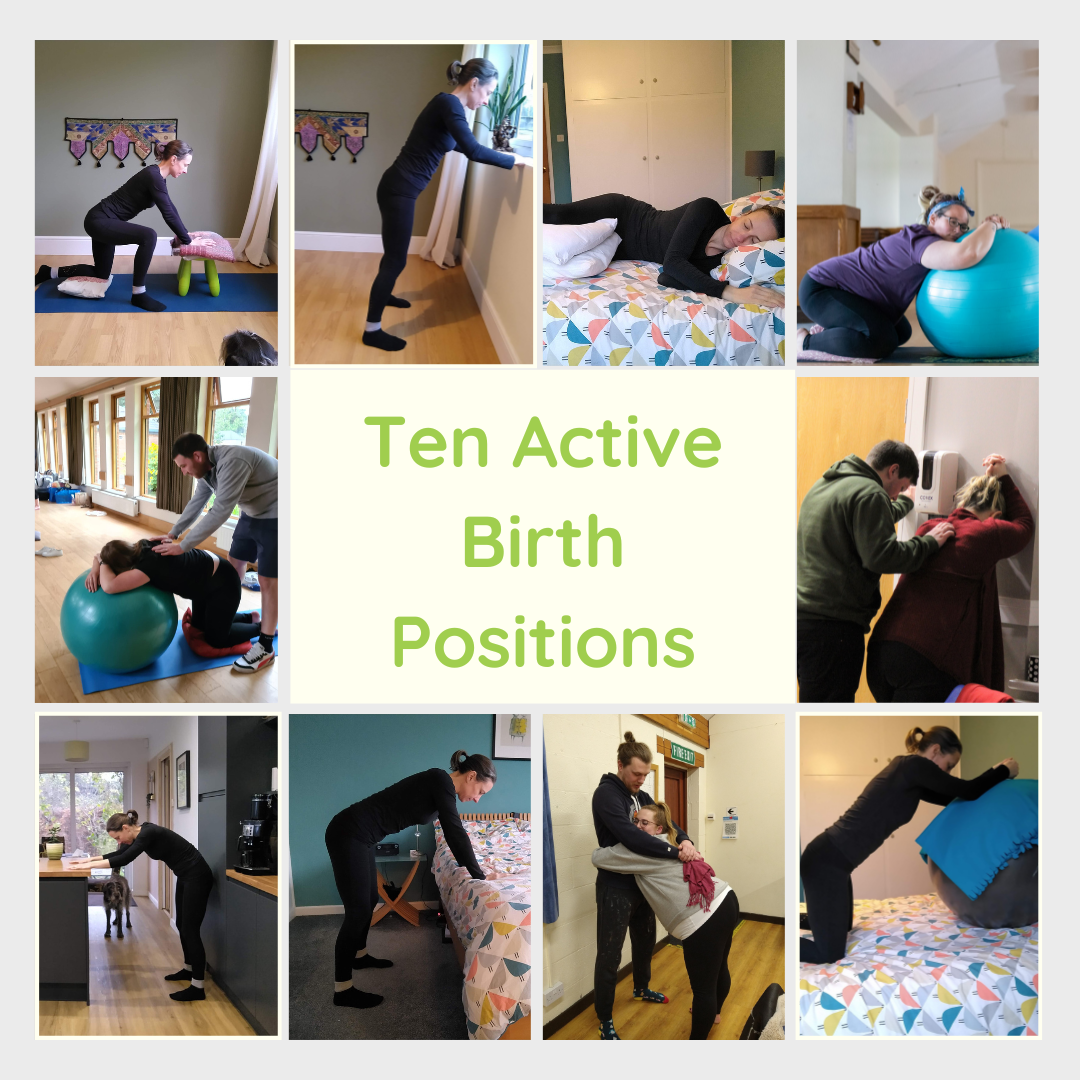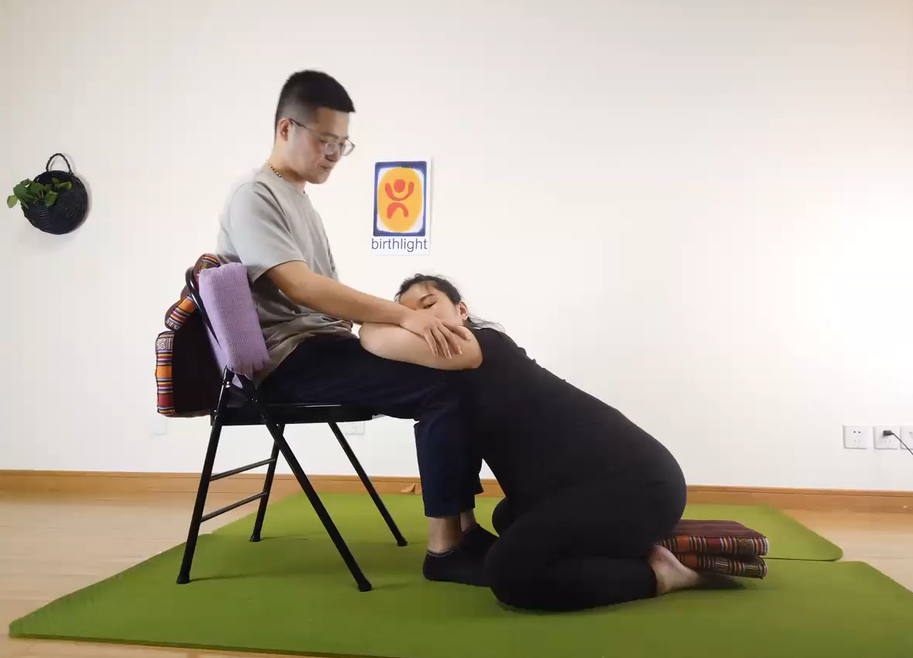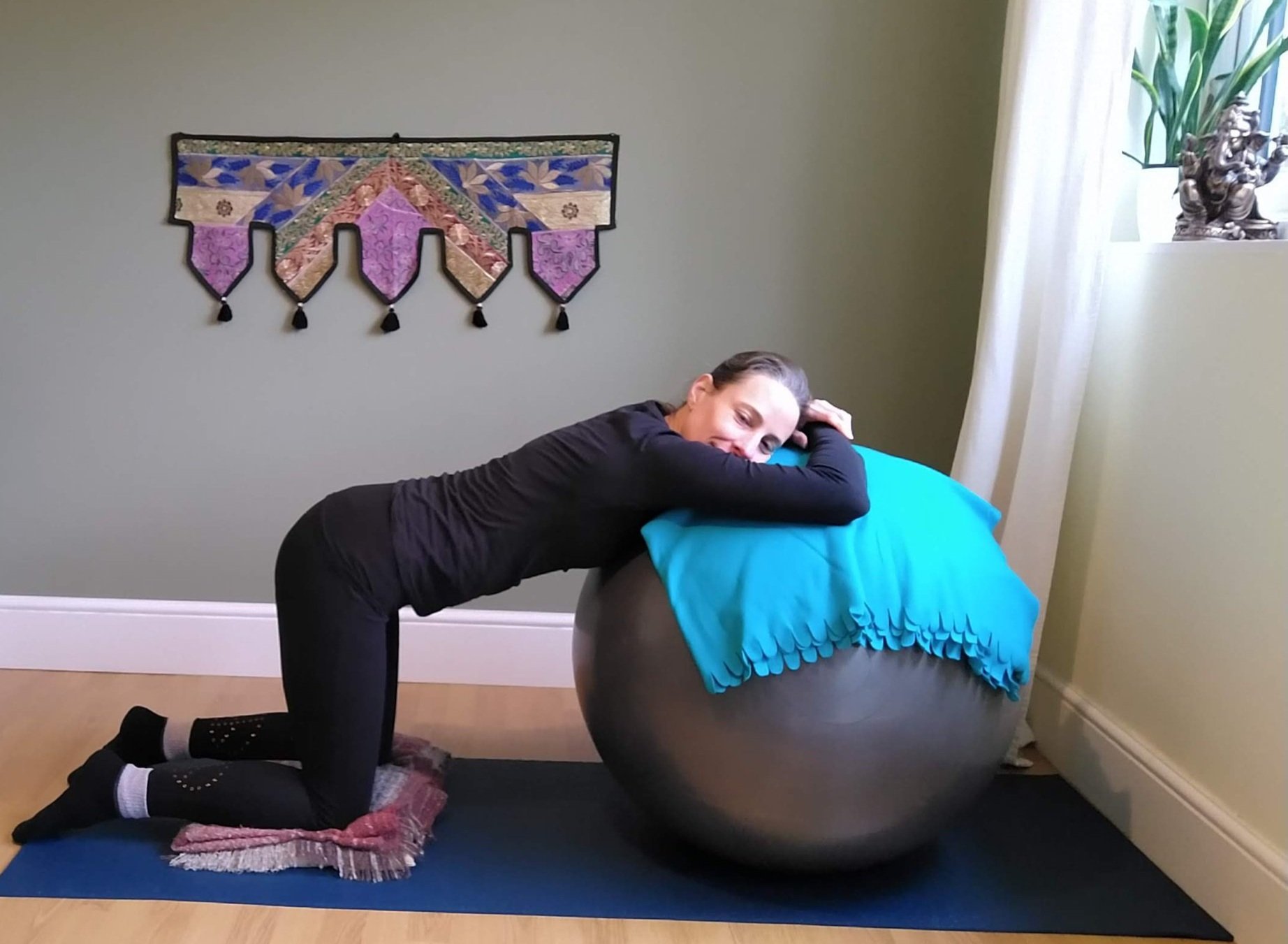Ten active birth positions to help you and your baby through labour and birth
The positions I am sharing in this blog post are just some of infinite variations you may discover as you labour and birth your baby in your own unique way. You can use them at home or in hospital.
They are a far cry from the usual way we imagine birth – lying on our backs with our legs wide. TV, film and the now more medicalised labour and birth system we have often promote lying on our backs as the way to give birth. They have somehow forgotten about the natural process of birthing, using gravity and tapping into instinct which can be shorter and offer less discomfort.
Rather than enable us to birth quietly, confidently and easefully we are asked to take unnatural labour and birthing positions. Sometimes it’s for reasons as simple as so that professionals can see what’s happening without having to get on the floor! Whatever position you and your body want to be in is ok, your professional support whether at home or hospital can work with you and around you in the way that you want to. Everything is your choice – it’s your body, your baby and your decision – including the positions you take to labour and birth in the best way for you and your baby.
Your pregnancy, labour and birth are unique to you and your baby.
Only you know how you feel, what positions feel comfortable and how you want to move and rest during labour and birth. Below are some pointers for positive positions and movements to help you and your baby through your labour and birth journey. Choose the ones that feel right for you, that are comfortable and that your body needs, change position if it’s not working for you, try them again later – there is no right or wrong.
When labour begins…
Conserve your energy and rest and relax into early contractions/surges as much as you can. If it is daytime, just potter around gently, continuing with day to day activities will keep you moving and occupied as contractions build. BUT rest as well – lie on your left side. Watch TV, break out those box sets, read a book, listen to guided relaxations. If it is night time – rest and get as much sleep as you can. Lie on your left side.
(Lying on your left side will help baby to keep moving into the optimal position for birth. When your baby is in the best possible position your birth can be much smoother and quicker.)
Once you feel that you can’t rest or be still any longer…
it’s time to find active forward leaning positions, these reduce the intensity of contractions, help your baby’s positioning by encouraging them off your spine and moves pregnancy along. They are great for labour – use them at home and when you get to hospital if that’s where you are birthing - and they are also great positions for birth itself. We call them UFO’s - Upright – Forward – and Open. You are upright rather than lying down so gravity can help you, you are leaning forward to help baby navigate through the pelvis and your tailbone is open so that it can move gently out of the way when baby is born. (If you are lying on your back this can’t happen).
If your hips can move, your baby can move into position and through the pelvis more easily.
Not just for labour and birth…
These positions can also be really useful during pregnancy to ease discomfort and help baby into a good position for birth, so maybe practice one or two our while you are watching TV or waiting for the kettle to boil. Let the hips sway or circle and you’ll find it eases the back and feels great. The more you practice, the more you are helping prepare yourself and your body for labour and birth, the positions will become second nature.
Here are ten UFO – Upright – Forward – Open positions you might like to try:
I’m sure you will find your own variations and supports from windowsills to mantle pieces at home and bedsteads to walls in hospital. The options are infinite, and your partner also makes a handy leaning post with inbuilt oxytocin– they can support you standing, like a slow dance, or if they sit on a chair you can be on all fours and lean into their lap – again lots of ways to be in contact with your partner if you find that supportive, but you might just need to know your partner is there and be in your own space – you’ll know when you get there.
If you are being monitored during labour and birth…
or have less space to move around in you can still use many of these positions on or near to the bed and your monitor. You don’t need to be bound to lying on the bed. You should still avoid lying on your back (all exams if you want them can be done whilst you lie on your side).
If you are birthing in a pool…
you will find all of the kneeling positions really useful as you rest onto the side of the pool.
1. Hands and knees on the floor or leaning onto ball/ chair/stool/partner/side of the pool– pad your knees with cushions or blankets.
birthlight.com
2. Hands and knees on the bed. - also great if you are being monitored
takingcharge.csh.umn.edu
3. Standing and leaning forwards on to kitchen counter/windowsill.
4. Standing and leaning forwards on to a wall/partner/in the shower.
5. Standing and leaning forwards on to the bed.
6. Kneel on one knee in a gentle lunge – this can help baby navigate through the mid pelvis.
birthlight.com
7. Stand with one leg bent to help baby navigate through the mid pelvis.
8. Rest when you need to leaning forward over your ball – let your body weight release into the ball.
9 Rest when you need to leaning forward over your ball on the bed.
10. Rest when you need to lying down - left side lying NOT on your back so that you can birth more easefully.
Change your position every 20 minutes or so to ensure that you are doing a range of forward leaning positions at different heights and using different supports to keep baby moving into and through your pelvis.
You may feel best being still in these positions, but often you will feel best making rhythmical movements – circling the hips, swaying, rocking figure 8s, shimmy's – listen into your body for intuitive movements - just tap into what feels right in the moment This can be really self-soothing. Put on your favourite music to match your energy – gentle or energetic. You may want to move through contractions and be still in-between to rest or be still for contractions and move in-between - and it may change - your body will let you know. Don’t forget to breathe and if you have learned yoga breathing or hypnobirthing techniques use them as well.
Listen into and have confidence in your body – it has innate knowledge of how to labour and birth – it will be your guide.
I hope this blog has provided you with some useful tools to take on your birthing journey. I encourage you to take a look more positive and active birthing information - the Active Birth Centre website is a good place to start for more inspiration. Find a local pregnancy yoga or active birth class if you want to learn how to use these tools through pregnancy and practice for birth. It’s never too late or too close to your birth to do this.




















